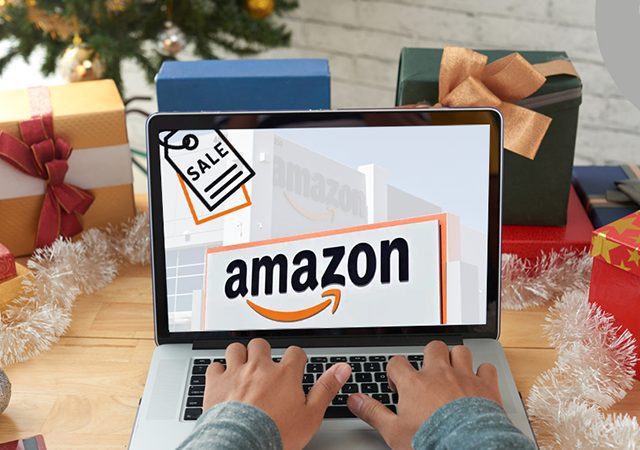Introduction
The holiday season is here! And with it comes the most exciting time of year for marketers: the holiday shopping season. With more than $2 trillion in sales expected this year, there’s never been a better time to reach your customers with something they want at a price they can afford. In fact, if you’re not already thinking about how you’ll get involved in this important part of our culture (and economy), now might be the time to start.
Even though it may be difficult to recall at this point, for Amazon vendors and sellers, the holiday shopping season in 2020 was very different from any other year. The first was the 2020 Prime Day event, which took place on October 13–14 instead of the usual mid-year timeframe. The adjustment led to the creation of a new Q4 “holiday” as a result of the surge in eCommerce demand pushing Amazon’s fulfillment capabilities to their maximum in the early months of the pandemic.
Compared to what would be expected in the middle of October, sponsored product click-through rates skyrocketed. With this year’s Prime Early Access Sale, we witnessed a continuation of this. Since shipping delays were at the time causing major problems and last-minute shoppers wouldn’t be able to reliably get packages as quickly late in the season, a large portion of Amazon’s and other retailers’ efforts to start the Q4 2020 shopping season earlier than usual was intended to pull demand earlier in the quarter.
Who Shopped on Prime Day?
Prime Day is an annual event that Amazon runs in the fall. It’s a sale exclusively for Prime members, and it includes hundreds of thousands of deals from thousands of brands. If you don’t have a Prime subscription, you can still sign up for one at this link: You can also sign up for a free trial to see how your favorite products work before buying them as long as they meet the criteria below:
- Must be purchased within 30 days (or returned within 14 days) of the purchase date to qualify for free shipping on all orders over $35 USD (excluding taxes and duties), otherwise standard shipping will apply. If you cancel before your trial ends then there’s no need to worry your account will automatically be charged according to the terms outlined above upon the cancellation date and time frame!
Amazon’s prime shoppers want to shop anywhere and anytime. They also want to be able to do so in any place, whether it’s a store or website. Prime shoppers are looking for a seamless experience that allows them to move quickly between different shopping platforms without having to worry about losing track of their items or making mistakes when purchasing products online.
Where are Shoppers looking for Deals Online?
If you’re looking to maximize your chances of selling on Amazon, there are a few key places where shoppers will be looking for deals. In general, these sites are all about convenience and speed they don’t have as much selection or flexibility as other retailers like Walmart or Target, but they do offer some great deals.
Amazon: This is the biggest and most popular retailer out there today. It has more than 100 million customers who use it every month (that’s more than the population of France), which means that even if you don’t sell anything through them directly, chances are pretty good that someone in your audience has bought something from Amazon recently!
- Price: Amazon shoppers want to see the price of products, so you should consider including this information in your listing.
- Shipping and return policies: Amazon shoppers are concerned about shipping costs and time frames, so you’ll want to make sure that your product’s delivery and return policy is clearly stated on the product page. If a customer needs an extra copy of a book for a friend, it’s better for them if they can buy it from someone who offers free shipping and vice versa! You can also include specific details about how long it will take before their purchase ships out (i.e, “This item will ship within two days”).
- Product reviews: Customers who have purchased something on Amazon may leave reviews after purchasing it; these reviews help other potential customers decide if they want to buy from this seller again in the future when making similar purchases at other websites like eBay or Walmart Marketplace (which we’ll talk more about later).

Amazon is the First Stop for Many Holiday Shoppers
Amazon is a great opportunity to reach people who are ready to buy but it can also be an expensive one if you aren’t smart about how you approach it.
Here are a few tips to get the most out of your Amazon advertising strategy:
- Consider your product category and target audience. Are you selling shoes, clothes, or electronics? Then make sure you’re targeting shoppers who are looking for these types of products on Amazon.
- Make sure your product and ad copy is relevant to shoppers on Amazon. If you’re selling a specific type of shoe, don’t talk about how great your socks are in the ad copy.
- Use Amazon’s targeting options to narrow down your audience. Are you selling a specific type of product? Then target shoppers based on their search history, browsing behavior, and purchase history on Amazon.
- Use Amazon’s product catalog to find related products that shoppers who are interested in your product might also be interested in. This can help you expand your reach beyond just one item or category.
- Test different types of ads and see what works best for your business. 6. Don’t just focus on getting clicks to make sure that people who click through to your website are converting into sales.

